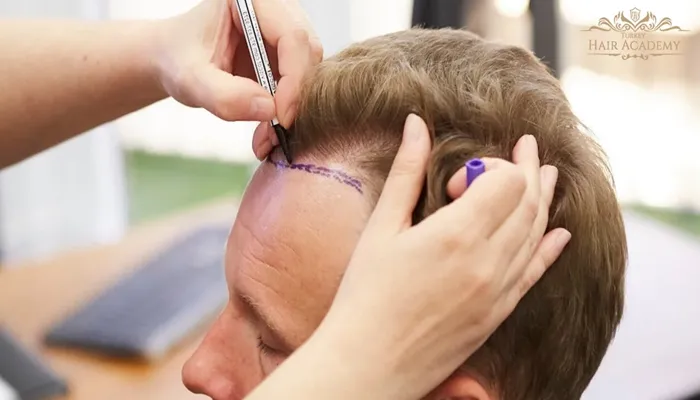Direct Hair Implantation (DHI) has gained significant popularity in the field of hair restoration due to its precision, minimal invasiveness, and impressive results. However, like any medical procedure, it is not without its drawbacks. As a hair transplant specialist, it is crucial to provide a balanced perspective on the potential cons of DHI. This article will delve into the disadvantages and considerations associated with this technique, helping patients make informed decisions about their hair restoration journey.
Higher Cost
One of the most significant drawbacks of DHI is its relatively high cost compared to some other hair transplant techniques. The specialized tools used in DHI, such as the DHI implanter pen, require significant investment in equipment and maintenance. Additionally, the procedure demands a high level of skill and expertise from the surgeon, who often charges a premium for their services. This is because the surgeon needs to have extensive training to master the precise placement of individual hair follicles, which takes time and practice. For patients on a tight budget, the cost of DHI may be a major deterrent, forcing them to explore more affordable alternatives.
Longer Procedure Time
DHI is a meticulous process that involves the individual placement of each hair follicle. This level of precision means that the procedure typically takes longer than other hair transplant methods, such as Follicular Unit Extraction (FUE) or Follicular Unit Transplantation (FUT). The extended time in the operating room can be physically and mentally exhausting for the patient. Moreover, a longer procedure increases the risk of potential complications, such as infection, due to the extended exposure of the surgical site. It also requires more time commitment from both the patient and the medical team, which can be inconvenient for those with busy schedules.
Limited Hair Quantity in a Single Session
Another con of DHI is the limited number of hair follicles that can be transplanted in a single session. The manual and precise nature of the DHI technique restricts the speed at which follicles can be implanted. As a result, patients with extensive hair loss may need to undergo multiple DHI sessions to achieve the desired level of hair density. Multiple sessions not only increase the overall cost but also prolong the treatment process, meaning patients have to wait longer to see their final results. This can be frustrating for individuals who are eager to restore their hair quickly.
Temporary Side Effects
While DHI is minimally invasive, it is not without side effects. Common temporary issues include:
Swelling and Bruising: Some patients may experience swelling and bruising around the scalp and forehead, which can take a few days to a week to subside.
Shock Loss: This is a temporary loss of existing hair around the transplant site due to surgical stress. Although the hair usually regrows within a few months, it can be distressing for patients.
Itching and Crusting: The scalp may become itchy and develop crusts as it heals. Patients are advised to avoid scratching the scalp to prevent infection and ensure proper healing.
Potential for Uneven Results
Despite the precision of DHI, there is still a risk of achieving uneven results. The success of the procedure depends heavily on the skill of the surgeon. If the surgeon does not have sufficient experience or makes errors during the follicle placement, it can lead to an unnatural – looking hairline or patches of uneven hair density. Achieving a natural – looking result requires a deep understanding of hair growth patterns, as well as the ability to place follicles at the correct angle and depth. In some cases, patients may need additional corrective procedures to address these issues, further adding to the cost and time investment.
Longer Recovery and Healing Period
Compared to some less invasive hair transplant techniques, DHI may have a relatively longer recovery and healing period. The insertion of individual follicles creates multiple small wounds on the scalp, which need time to heal. During this period, patients may experience discomfort, swelling, and redness. They also need to follow strict post – operative care instructions, such as avoiding strenuous activities, keeping the scalp clean, and using specific medications. Any deviation from these instructions can increase the risk of complications, such as infection or scarring, which can delay the healing process and potentially affect the final outcome of the hair transplant.
Conclusion
Direct Hair Implantation (DHI) is a highly effective and advanced technique in hair restoration, offering numerous benefits such as precision, minimal invasiveness, and natural-looking results. However, it is essential to consider the potential drawbacks, including higher costs, longer procedure times, the need for skilled practitioners, and temporary side effects. As a hair transplant specialist, I always recommend that patients thoroughly research their options and consult with a qualified professional to determine if DHI is the right choice for their specific needs and circumstances. By understanding both the pros and cons, patients can make informed decisions and achieve the best possible outcomes for their hair restoration journey.
Related topics:
What Is the Success Rate of DHI Hair Transplant?
What Is the Cost of DHI Hair Transplant in Hyderabad?
Is DHI Hair Transplant in Hyderabad Worth It?


